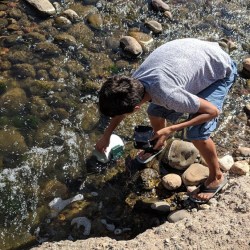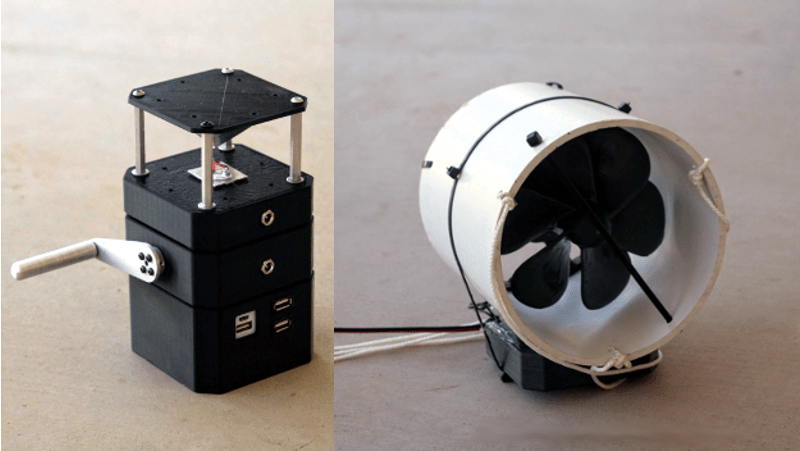What’s great about the Power Generation Modules project headed by [Cole B] is the focus on usability and modularity. The project is a system for powering and charging small devices using any number and combination of generator modules: wind turbine, hand-crank, and water turbine so far. Power management and storage is handled by a separate unit that acts as a battery bank to store the output from up to six generators at once. There’s also a separate LED lamp module, designed to be capable of being powered directly from any of the generator modules if needed.

The hand crank is straightforward in concept, but key to usability was selecting a DC gearmotor with a gear ratio that made cranking by hand both comfortable and sustainable; too weak of a crank and it’s awkward, too hard and it’s tiring. The wind turbine has three compact vanes that turn a central shaft, but testing showed the brushless motor it uses as a generator isn’t a good match for the design; the wind turbine won’t turn well in regular wind conditions. The water turbine prototype showed great success; it consists of an epoxy-glazed, 5 inch diameter 3D printed propeller housed in a section of PVC pipe. The propeller drives a brushless motor which [Cole B] says easily outputs between eight to ten volts when testing in a small stream.
The team has plans for other generators such as solar, but this is a great start to an array of modules that can be used to power and charge small devices while off the grid. We’re happy to see them as a finalist for The Hackaday Prize; they were selected as one of the twenty projects to receive $1000 cash each in the Power Harvesting Challenge. The Human-Computer Interface Challenge is currently underway which seeks innovative ideas about how humans and computers can interface with one another, and twenty of those finalists will also receive $1000 each and be in the running for the Grand Prize of $50,000.



















Now add a thermocouple bank to supply power from a campfire.
A peltier element might be better suited for this, similar too a biolite stove usb charger
More specifically, a Seebeck module, which is the Peltier effect in reverse. Seebeck modules are optimised for it.
The hard/expensive part is getting a high temperature module that wont fail if overheated.
This is a really neat project, especially the water turbine. I wonder if a version could be built to fit the bottom of my rain downspouts?
Do you have 7 dollars to spare?
“DC 12V 10W Water Turbine Generator” on ebay
https://www.ebay.com/itm/DC-12V-10W-Water-Turbine-Generator-Water-Micro-hydro-Power-DIY-Charging-Tool-HOT-/172473763802?hash=item28283cc7da:g:UcMAAOSweW5VYtFd
Thanks, but the one listed on eBay won’t flow water fast enough. A lot of water flows down downspouts when it rains.
Nice post. Thanks for the information.
> but key to usability was selecting a DC gearmotor with a gear ratio that made cranking by hand both comfortable and sustainable
Would be nice then if such information was shared in the project documentation, or did I just miss it?